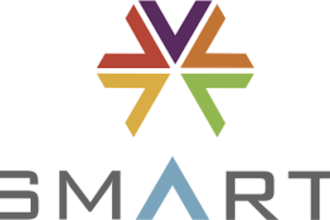 The healthcare industry is in the midst of some rapid changes. Technology continues to advance at a furious pace, and the results could lead to better patient care and outcomes. As promising as these advances are, healthcare institutions can be slow to adopt them, preferring to stick with methods they determine to be tried and true.
The healthcare industry is in the midst of some rapid changes. Technology continues to advance at a furious pace, and the results could lead to better patient care and outcomes. As promising as these advances are, healthcare institutions can be slow to adopt them, preferring to stick with methods they determine to be tried and true.
 The healthcare industry is in the midst of some rapid changes. Technology continues to advance at a furious pace, and the results could lead to better patient care and outcomes. As promising as these advances are, healthcare institutions can be slow to adopt them, preferring to stick with methods they determine to be tried and true. Even so, hospitals and healthcare facilities are beginning to grasp the true potential of what the rapidly evolving technological landscape has to offer from simple online ACLS training to advanced techniques. Certain trends have come to the forefront, leading to some big changes we’re seeing today and some intriguing promises for the future. In fact, the healthcare of the future may be completely different to what we’re used to seeing. Here are just several of the trends leading the way that everyone–both patients and doctors–should watch out for.
The healthcare industry is in the midst of some rapid changes. Technology continues to advance at a furious pace, and the results could lead to better patient care and outcomes. As promising as these advances are, healthcare institutions can be slow to adopt them, preferring to stick with methods they determine to be tried and true. Even so, hospitals and healthcare facilities are beginning to grasp the true potential of what the rapidly evolving technological landscape has to offer from simple online ACLS training to advanced techniques. Certain trends have come to the forefront, leading to some big changes we’re seeing today and some intriguing promises for the future. In fact, the healthcare of the future may be completely different to what we’re used to seeing. Here are just several of the trends leading the way that everyone–both patients and doctors–should watch out for.
1. Easily Accessible Patient Records
To say that health records are a complicated matter is to understate the problem. While hospitals certainly want to protect patient information, the unfortunate truth is that health records have become cluttered and disorganized, often weighed down with numerous different standards. Most files don’t even come in the same format. Luckily, health officials are pushing to consolidate patient information, creating a more standardized way to access records. Some information is already being stored as electronic medical records (EMRs), and that format is slowly becoming the norm in the industry. Experts predict a single platform will soon be developed that securely stores patient information while collecting that data from multiple different sources. This in turn will help inform doctors and patients.
2. The Rise of BYOD
Bring your own device (BYOD) has already made strides in many businesses in the world, but hospitals have been slow to adopt it out of security and confidentiality concerns. That may change as administrators see how much more effective doctors can be when having access to personal mobile devices. Doctors and nurses are already highly mobile, traveling all over the hospital as they treat patients. In light of this, having a mobile devices with access to patient information can be a highly valuable strategy. BYOD devices with approved apps can also be used to order medications, prescribe treatments, make notes, and remotely monitor patients.
3. More Wearable Technology
Much like BYOD, wearable technology has the chance to alter the healthcare landscape, only this time it would come from what the patients do. It’s through wearable tech that patients can monitor their own health and track their progress. Wearable devices are already being used to read temperatures, monitor heart rates, and even check blood pressure. They may also be used to alert users when their health signs reach dangerous levels. For example, developers are already working on contact lenses that help patients with diabetes keep a close eye on their blood sugar levels. Wearable technology is still in its infancy, so the advances in the coming years are sure to be drastic.
4. Healthcare Gets More Social
Social media isn’t just for connecting with friends and family; sites like Facebook are actually contributing to greater health awareness. Online communities have sprung up featuring created and shared content that can help people be more informed about certain health problems. This more social direction healthcare is taking can also help people get support, like on Facebook pages where people with family members who suffer from Alzheimer’s can get advice and encouragement from others in the same position. Doctors are also connecting with patients through social networks as well, though privacy remains a key priority.
5. Development of Nanoparticles
Once thought to be the realm of science-fiction, nanotechnology may be the next great revolution in healthcare. Google is partnering with researchers to develop special nanoparticles designed to monitor health issues in a much more accurate and effective manner than wearables. The nanoparticles are already being tested to detect and treat cancer. The possibilities for improving patient health and treatments are nearly endless, but widespread use of the technology is probably still a number of years away.
These are just a handful of the trends showing the promising direction healthcare is taking. If one thing is clear, healthcare in the future is likely to become more personalized, with patients receiving more individualized care. Doctors are also set to have more data at their fingertips than ever before, which can only improve the quality of care. It’s an exciting time for the healthcare industry, and more advances are just around the corner.
big data security / shutterstock








